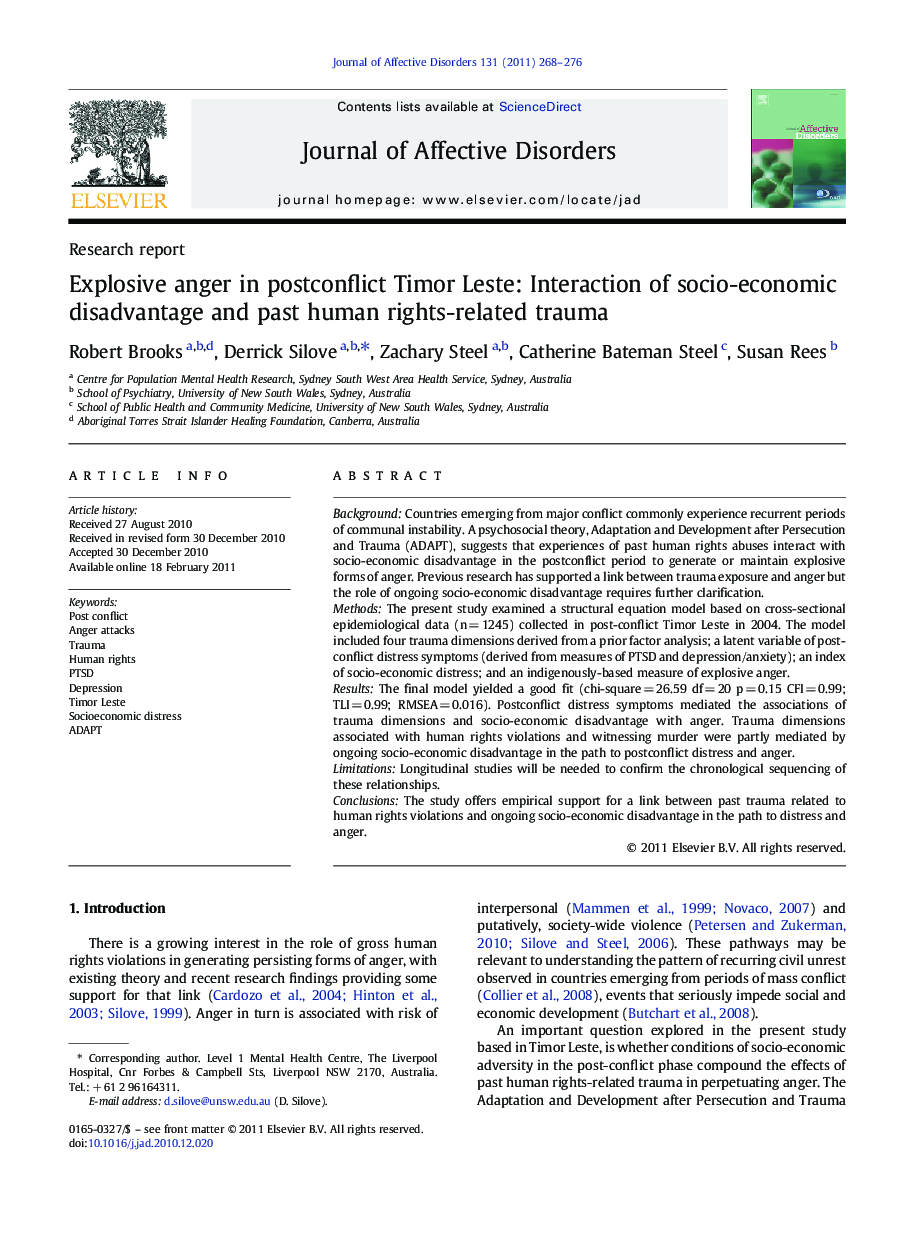| Article ID | Journal | Published Year | Pages | File Type |
|---|---|---|---|---|
| 6235780 | Journal of Affective Disorders | 2011 | 9 Pages |
BackgroundCountries emerging from major conflict commonly experience recurrent periods of communal instability. A psychosocial theory, Adaptation and Development after Persecution and Trauma (ADAPT), suggests that experiences of past human rights abuses interact with socio-economic disadvantage in the postconflict period to generate or maintain explosive forms of anger. Previous research has supported a link between trauma exposure and anger but the role of ongoing socio-economic disadvantage requires further clarification.MethodsThe present study examined a structural equation model based on cross-sectional epidemiological data (n = 1245) collected in post-conflict Timor Leste in 2004. The model included four trauma dimensions derived from a prior factor analysis; a latent variable of post-conflict distress symptoms (derived from measures of PTSD and depression/anxiety); an index of socio-economic distress; and an indigenously-based measure of explosive anger.ResultsThe final model yielded a good fit (chi-square = 26.59 df = 20 p = 0.15 CFI = 0.99; TLI = 0.99; RMSEA = 0.016). Postconflict distress symptoms mediated the associations of trauma dimensions and socio-economic disadvantage with anger. Trauma dimensions associated with human rights violations and witnessing murder were partly mediated by ongoing socio-economic disadvantage in the path to postconflict distress and anger.LimitationsLongitudinal studies will be needed to confirm the chronological sequencing of these relationships.ConclusionsThe study offers empirical support for a link between past trauma related to human rights violations and ongoing socio-economic disadvantage in the path to distress and anger.
